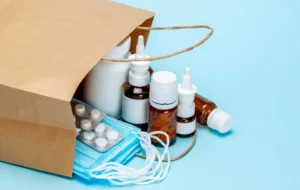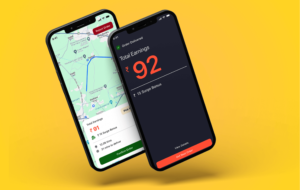Healthcare is more than just treating illnesses; it’s about managing relationships, improving patient experiences, and making informed decisions. But if you’ve ever been frustrated by duplicate paperwork, outdated records, or disjointed communication between different healthcare providers, you know that traditional Electronic Health Record (EHR) systems still have major gaps.
That’s where Salesforce Health Cloud steps in, offering a modern approach to patient management. It’s not just another software; it’s a game-changer for healthcare organizations looking to provide personalized, proactive care. But how does it compare to traditional EHRs? More importantly, which one makes sense for your healthcare business?
Let’s break it down in real terms, looking at how these systems impact patient care, operations, and long-term value.
What is Salesforce Health Cloud?
Salesforce Health Cloud is a cloud-based healthcare CRM (Customer Relationship Management) platform designed to centralize patient information, improve communication, and drive better outcomes. Unlike traditional EHRs that primarily store medical records, Health Cloud goes further by integrating clinical, administrative, and social data to give providers a complete picture of their patients.
At its core, Health Cloud helps hospitals, clinics, insurance providers, and pharmaceutical companies deliver more coordinated and patient-centric care. It works seamlessly with existing EHR systems, so instead of replacing them, it enhances their capabilities.
Read more: Salesforce Health Cloud Implementation Guide 2024
Key Features and Benefits of Salesforce Health Cloud
Now that we’ve got a basic idea, let’s look at what’s inside the Health Cloud toolbox. Here’s a breakdown of its key features that healthcare organizations are using every day.
1. Unified Patient Profiles
It combines data from various sources—EHRs, labs, wearables, and insurance systems into a single profile. That means providers don’t have to juggle multiple screens or call other departments for updates.
2. Patient-centric Approach
Instead of focusing only on conditions and treatments, Health Cloud creates an experience around the patient. Care plans, goals, barriers, and communication preferences are all part of the equation.
3. Smart Task Management
With automated workflows and intelligent task assignments, administrative delays drop significantly. Care coordinators can spend more time helping patients and less time figuring out the next step.
4. Integration with Other Systems
Using APIs and connectors, it integrates with existing EHRs and billing systems, which means you don’t have to throw everything out and start from scratch.
5. Real-Time Communication
Secure messaging and collaboration tools help care teams stay updated without relying on fragmented email threads or delayed phone calls.
If you’re wondering how it all fits into practice, we’ve covered 13 top benefits of Salesforce Health Cloud in a detailed article here.
What Is a Traditional EHR System?
Let’s now talk about the older, more familiar tool in healthcare settings: Electronic Health Records (EHRs).
Traditional EHR systems are primarily built for clinical documentation. They were designed to digitize patient records, replacing paper files with digital entries that include medications, diagnoses, allergies, test results, and treatment plans. And they’ve done a good job at that.
Think of EHRs as electronic filing cabinets. They store important information but don’t necessarily help teams act on it quickly or build relationships around it. These platforms are robust in medical data management but often fall short when it comes to patient engagement, team collaboration, or marketing outreach.
Core Functionalities of Traditional EHRs
Traditional EHRs are great at what they were designed for. Here’s what they typically offer:
1. Clinical Data Management
Everything from SOAP notes to imaging results is organized and accessible for clinical use.
2. Regulatory Compliance
EHRs meet industry standards like HIPAA, HL7, and Meaningful Use to ensure clinical data is secure and usable for audits or legal records.
3. Medical Billing & Coding
Integrated modules help with claim submissions, insurance verifications, and coding systems like ICD-10.
4. Medication Tracking
Pharmacy integrations and drug-interaction alerts make it safer for patients and easier for doctors to prescribe medications.
5. Appointment Scheduling
Built-in calendars allow for patient scheduling, reminders, and reschedulingbut only within the confines of clinical workflows. Where EHRs often lag is outside the clinical encounter. They’re less equipped to manage outreach, social needs, lifestyle interventions, or multi-disciplinary team collaboration.
Salesforce Health Cloud vs. Traditional EHR: Key Differences
Now let’s put them side by side and look at how they differ across practical areas:
| Feature/Function | Salesforce Health Cloud | Traditional EHR System |
|---|---|---|
| Patient Data View | Holistic and contextual | Clinical and condition-focused |
| Communication | Real-time messaging, mobile, and patient portals | Mostly internal, minimal patient-facing tools |
| Integration | Easily integrates with third-party systems and legacy EHRs | Limited flexibility in integrations |
| Care Management | End-to-end care coordination, goals, and tasks | Focus on documentation of care episodes |
| Customization | Highly configurable | Limited and costly customizations |
| AI and Automation | Built-in Einstein AI for insights and workflows | Minimal predictive capabilities |
Cost, ROI & Long-Term Value: Which is more Cost-Effective?
This is the part every healthcare business is curious about.
Implementing Salesforce Health Cloud might feel like a bigger upfront investment compared to sticking with your existing EHR. But that’s only part of the story.
Here’s what often goes overlooked:
- Salesforce Health Cloud reduces manual work by automating admin tasks.
- It cuts down on readmissions through better follow-up care.
- Staff productivity increases due to fewer information silos.
- Patient retention improves with better engagement.
EHRs, on the other hand, are often locked into legacy contracts. Adding new features can cost more than expected. And adapting them to business growth can be a challenge.
When viewed over a 3-5 year horizon, most organizations see stronger ROI from Health Cloud because it improves outcomes across operations, not just in the clinic.
Why leading Healthcare Providers are choosing Salesforce Health Cloud
Let’s talk real scenarios.
Across the globe, leading health systems, behavioral health clinics, payers, and even medical device companies are moving to Health Cloud for specific reasons:
- Multi-channel Patient Engagement: SMS, email, phone, appall in one place.
- Care Team Collaboration: From nutritionists to case managers, everyone stays connected.
- Personalized Care Journeys: No more generic reminders; now it’s “Hey John, hope your shoulder is healing well. Let’s schedule your next physio session.”
The beauty of Health Cloud is its flexibility. Whether you’re a diagnostic lab, a chain of clinics, or a remote therapy provider, there’s room to build what you need.
Future of Healthcare Technology
The healthcare space is changing faster than it ever has. Remote care is growing. Value-based models are replacing fee-for-service ones. Patients want transparency, empathy, and convenience.
In this landscape, traditional EHRs will likely remain, but their role will shrink. The need for a platform that connects dots, not just stores data, is growing.
Salesforce Health Cloud is already evolving:
- With AI capabilities through Salesforce Einstein
- With connected experiences through Experience Cloud
- With predictive analytics for early risk detection
And it’s doing this without disrupting the clinical workflows that EHRs have established. Instead, it works with them, often side by side.
Is Salesforce Health Cloud the Right Choice For You?
This depends on what your healthcare organization wants to solve today and where it wants to go tomorrow.
If your only concern is storing medical records, then your current EHR may be enough. But if you’re looking to:
- Coordinate across multi-functional care teams
- Reduce operational friction
- Engage patients in a meaningful way
- Offer personalized care experiences
- Build long-term patient loyalty
Then, it might be time to explore Salesforce Health Cloud seriously.
At Melonleaf Consulting, we’ve helped healthcare organizations of all sizes make the shift with clarity, speed, and the right strategy in place. From implementation to optimization, we work as partners because, in healthcare, tech should support humans, not the other way around.
Wrapping Up
Choosing between Salesforce Health Cloud and a traditional EHR system isn’t just a technological decision. It’s a business trip. One that impacts how your patients feel, how your staff works, and how your organization grows.
Both systems serve important roles. But where traditional EHRs document care, Salesforce Health Cloud helps deliver better care.
If you’re thinking about making the move or just want to understand what it might mean for your business, we’re here to help. You can always talk to our Salesforce Health Cloud experts at Melonleaf Consulting. It starts with a conversation.












